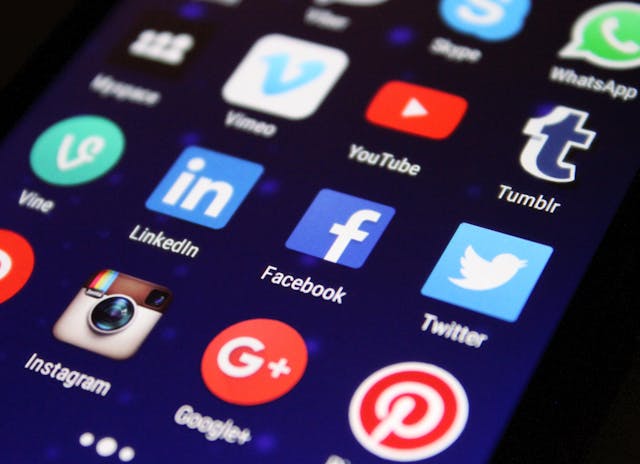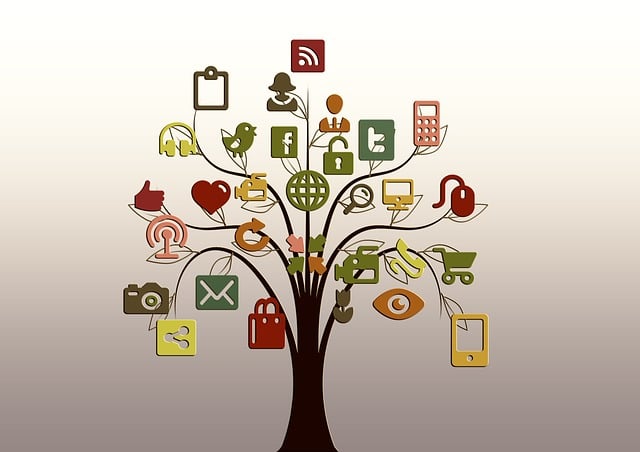Ways to Adapt Content for the Age of Social Media Entertainment
- Lead with personality.
Every brand has a unique personality that distinguishes it from rivals. Identify your talents and shortcomings, then carve out a niche for yourself. To achieve this, you should: - Be genuine.
- Optimize for Shareability
- Tap into certain communities.
- Post material that closely relates your brand to your target audience’s values.
- How does social media affect entertainment?
- How has social media influenced entertainment marketing?
Over the course of 26 years, social media has evolved from a basic communication medium to a formidable marketing platform. From the early days of Six Degrees to the development of TikTok and the launch of Threads, marketers have had to adapt to this ever-changing world. As a consequence, social media managers’ roles have evolved as well.
From content production to community administration, social teams’ duties have grown dramatically. And, given the prevalence of video, it’s evident that entertaining is important in your social media content strategy.
As a brand, you must react to this transformation by engaging your consumers in a more honest and personal manner.
In this post, you’ll discover how social media entertainment evolved and how you can use it for your company to grow your devoted client base while being current.

We also include portions from Sprout’s Webinar Masterclass series, in which Rachel Karten, social media strategist and founder of the Link in Bio newsletter, presented her insights on crafting witty content that connects with your audience.
What sparked the age of social entertainment?
Social media used to be a direct means to engage with your community, and the algorithm had little effect on your feeds.
So, if you followed a company on social media, its postings would appear in your feed regardless of SEO. Today, every post is determined by criteria like as format, inventiveness, hashtags, how people interact with it, and the always changing algorithm. Plus, everyone is vying for attention.
As a consequence, social media is now as vital for brand exposure as it is for community development, and standing out demands honest storytelling and crafting a distinct voice. It has also evolved into a source of entertainment, which viewers want more than ever.
Let’s look at how this transformation in social media entertainment came about.
The epidemic has made lo-fi material a necessity.
With most individuals confined to their homes during the pandemic, the average amount of time spent on social media by US users in 2020 increased to 65 minutes per day, a considerable increase over the previous year. This quick growth compelled marketers to abandon old techniques in favor of more imaginative approaches.
Enter lo-fi (low-fidelity) and personality-driven content. With consumers seeking authenticity and greater personal engagement, polished material was no longer sufficient. Brands like Oreo were among the first to embrace lo-fi content with amazing ingenuity.
While isolated, spectators wanted to see genuine people and faces. And businesses reacted by having their staff, even CEOs, publish tales and film reels directly from their phones.
Audience preferences for narrative in marketing.
More time spent at home and on their phones meant that viewers wanted more entertainment. A engaging tale relies on a good plot, well-developed characters, conflicts, and resolution. And social media material is no exception. Audiences desire entertainment, and you may capture their full focus on social media if you outperform your rivals who are striving for the same attention. You may do this by creating visually appealing, distinctive, and relevant content.
The pandemic, as well as previous worldwide shifts such as the emergence of smartphones and the Hollywood writer’s strike in 2007, which fueled today’s reality programs, altered how people consume material. They’re still searching for the same qualities that make a compelling tale, but without the sense that it’s artificial or phony. It is a sign of the times.
Furthermore, as the Internet becomes more widely accessible, making unfounded claims is no longer acceptable. As Rachel said in the Masterclass, people’s tolerance for BS is at an all-time low.
The most successful businesses embraced this shift in content consumption, altering their tactics to produce tales that connect with their target demographic.
For example, this YouTube video from Google use narrative to gently promote its advantages while also comparing them to a rival in an approachable way.
The so-called “TikTok effect”
TikTok established entertainment’s presence on social media. TikTok began as a social media entertainment platform and has swiftly established itself as a key component of every brand’s social media marketing strategies.
TikTok was genuinely a people’s app, allowing ordinary people to produce and share original, short-form video content about any topic. The app’s ranking algorithms leveled the playing field even further, allowing videos to appear on feeds based solely on the degree of interaction they received, such as views, likes, and shares, resulting in TikTok trends or “challenges”.
TikTok promotions such as the #ChipotleLidFlip challenge and the #GuacDance challenge generated over 250K video entries and 430 million plays in only six days. Following the #GuacDance challenge, Chipotle announced over $800K in guacamole sales on National Guacamole Day.

TikTok grabbed the globe by storm with its short-video style and savvy branding, surpassing YouTube as the most-watched app in 2021 and Netflix as the most downloaded app in 2022.
It affected consumer tastes as well. According to the Sprout Social Index™, 38% of users choose businesses that emphasize unique content over popular topics.
Three approaches to producing more interesting social content
Social media teams are practically in-house content producers, so you must be aware of the current trends and integrate them with your brand’s values. All while entertaining your audience.
However, Rachel said, “It’s really important you understand that social is now entertainment first.”
There is no one-size-fits-all solution to social media entertainment. This openness allows you to experiment with various content kinds and forms. However, there are several characteristics that might help companies alter their voice to be amusing.
Here are three ways you may include fun into your social content:
Move beyond having a powerful voice and tone.
Tone and voice are essential components of every brand’s identity, but in today’s ever-changing social world, where businesses compete for customers’ attention, it is imperative to go beyond the conventional way.
Take Ryanair, a discount airline. With its self-deprecating humour and humorous comments, the brand has become associated with disruptive social media marketing. Their content is more than simply another marketing tool; it engages their consumers and fosters a feeling of community on social media, where fans exchange laughs and stories about their flying travels.
Put a face to your brand, and call on creators as required.
Consider creators to be an extension of your social team, rather than just occasional collaborators.
Rachel went on to say, “I think one way to think about creators and influencers is sponsored posts, but another way is how can we bring them onto our channels and use their comedic timing and their personality on our channels.”
If your influencer budget is tight, ask your coworkers to post some behind-the-scenes material or urge your customers to make content with your goods. It’s also an excellent option if you or your social media staff are not comfortable going on camera.
Old Navy encourages its consumers to use the hashtag #OldNavyStyle on social media when sharing videos or photographs using their merchandise. This method resulted in an increase of over 500,000 Instagram posts and over 15.5k TikTok likes.
No, we’re not referring to the social platform “Be real”; we mean be genuine.
With social media being so omnipresent and consumers growing more aware of marketing and sales practices, companies can no longer depend on superficial content. Consumers need honesty and authenticity in content that adds value and is relevant.
To hit the appropriate authenticity chord, you must:
Embrace lo-fi, and quit showing up flawless.
Not only is it cost-effective, but it also conveys the human aspect of your company while generating better ROI on fewer expenditures. Shoot unpolished films or take product photographs with your phone and push post.
With over 2.4 million TikTok followers, Fenty Beauty embraces the platform’s lo-fi video approach, allowing their audience and goods to speak for the brand’s worth.
Humanize your brand.

Make your material feel more like a person than a brand. For example, BTS footage from your workplace, factory, or kitchen.
“Think of creative ways to make your content feel more like a person, like a peer’s content, and not like there’s some brand kind of talking down to your audience.”
At Sprout, we often hire workers from different departments to appear in our social media films to highlight the individuals behind the brand.
Social media algorithms are increasingly concentrating on discoverability, allowing you to find unlimited amusement from artists and businesses you may not have previously followed. Relevancy and relatability motivate individuals to share material.
To generate such content:
Consider this Uber Eats tweet as one example. They commemorated Father’s Day by posting jokes on their page and discreetly pushing people to purchase something special for their father. They emphasized the value of spending quality time with loved ones and recognizing the role dads play in our lives.
Engage in community development via social media entertainment.
Social media is a chance to develop genuine interactions with your consumers. Use the power of social media entertainment to engage with your audience on a deeper level and create a feeling of community that promotes brand loyalty.
And with tools like Sprout that help you create compelling captions for social posts and capture consumer trends via social listening, the chances to modify your marketing strategy for maximum effect are unlimited.
Watch Rachael Karten’s Masterclass webinar to learn more about generating meaningful content that entertains and engages your audience in a genuine, honest manner.
Frequently asked Questions
Social media has transformed how people consume material by becoming entertainment platforms. It’s no longer simply about communicating with family and friends. Short-form video platforms like TikTok, as well as conventional social networks like Facebook and Instagram, have expanded their reach by optimizing their algorithms for discovery and interaction, resulting in an infinite stream of amusing material.
Social media has resulted in a surge of content providers producing user-generated material that is engaging, genuine, and monetizable. These influencers have become as powerful as celebrities, allowing firms to maximize marketing spending in order to reach larger audiences and develop stronger relationships with consumers.






